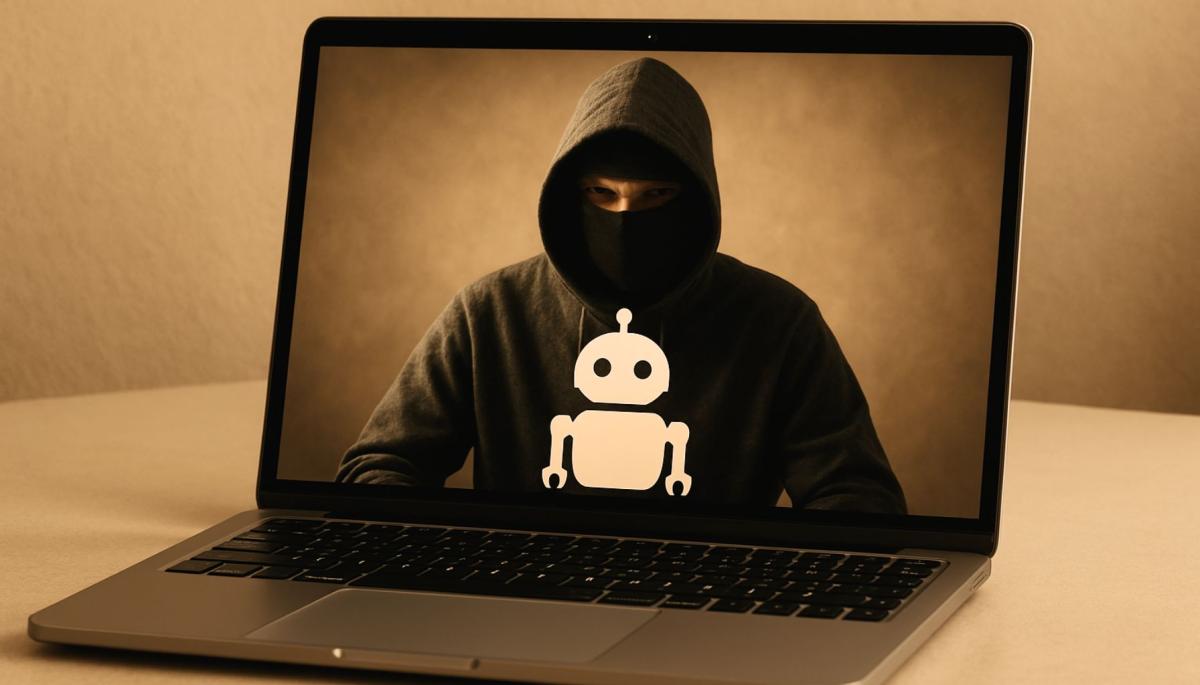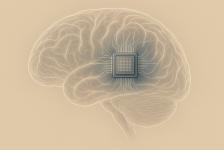Botnets represent one of the most dangerous weapons of cybercriminals. These are networks of infected computers that are secretly controlled remotely. Your computer can become part of this army of "zombie" devices and be misused for DDoS attacks, spam distribution, cryptocurrency mining, or data theft. How to recognize that you are a victim and how to effectively protect yourself?

One day, your computer starts acting strangely. It is slower than usual, the fans unexpectedly spin at full speed, and even though you're not doing anything demanding, something seems to be consuming system resources in the background. Unfortunately, you have likely unknowingly become part of a botnet—one of the most dangerous weapons in the arsenal of cybercriminals.
What is a botnet?
A botnet is a network of infected computers and devices that are secretly controlled by an attacker (often referred to as the "botmaster"). The name comes from the combination of the words "robot" and "network," which aptly describes its nature—a computer "robot" army ready to execute its master's commands.
Each infected computer in this network is called a "bot" or "zombie." What makes botnets so dangerous is their collective power. While one infected computer has limited potential, thousands or even millions of connected devices create a powerful computing force that can be misused for various malicious activities.
How does your computer become part of a botnet?
The process through which your computer becomes a compliant "bot" begins with a malware infection.
There are several common ways this can happen:
- Phishing emails – You receive an apparently legitimate email with a link or attachment that contains malicious code.
- Drive-by downloads – You visit a compromised website that automatically downloads and installs malware without your knowledge.
- Vulnerable software – Attackers exploit security vulnerabilities in applications or the operating system that have not been updated.
- Social engineering – You are convinced to install a program that is actually a Trojan horse containing backdoors for attackers.
After successful infection, malware settles into your system, usually staying inconspicuous. It is designed to hide from antivirus programs and users. It then connects to a so-called command and control (C&C) server—a central node where the botmaster controls the entire network.

How do attackers use infected computers?
Once a botnet is created, it can be used for various malicious activities. The most well-known are discussed below.
DDoS attacks (Distributed Denial of Service)
The most well-known use of botnets is DDoS attacks. In this case, the attacker instructs all the bots in the network to simultaneously send requests to a specific web service or server. The massive amount of traffic overwhelms the target server, preventing it from processing legitimate requests.
An example is the Mirai botnet, which, in 2016, caused one of the largest DDoS attacks in history when it temporarily disabled significant internet services, including Twitter, Netflix, and Reddit.
Spamming and malware distribution
Your computer can be used to send unsolicited emails or spread further malware. Attackers can distribute spam without revealing their true identity because the emails originate from legitimate, although compromised, computers.
Data theft
A botnet can be equipped with features for keystroke logging, screen capturing, or file searching, allowing attackers to steal your passwords, credit card numbers, personal information, or business secrets.
Cryptocurrency mining
In recent years, using the computing power of botnets for cryptocurrency mining (so-called cryptojacking) has become popular. Your computer can be mining Bitcoin, Monero, or other cryptocurrencies in the background, while all the profits go into the attacker's pockets. Meanwhile, you suffer from increased electricity consumption and reduced device performance.
Botnet rental
Many attackers even rent out their botnets to other cybercriminals—a model known as "Botnet-as-a-Service" (BaaS). For a fee, practically anyone can rent a botnet for their own malicious purposes, without needing the technical knowledge required to create one.
Known botnets and their impact
The history of botnets is full of examples of destructive networks that caused significant damage.
Conficker
Discovered in late 2008, Conficker quickly grew into one of the most well-known botnets in the history of cybercrime. At its peak in 2009, it infected over 10 million Windows computers worldwide, making it one of the largest botnet networks of all time.
What made Conficker especially dangerous was its ability to continuously update itself and evade detection. The malware could block access to security websites, prevent downloading updates, and had advanced functions for covering its tracks.
Despite the formation of a special task force (Conficker Working Group) that included major security companies, Conficker remains partially active to this day, albeit on a much smaller scale.
Gameover Zeus
Gameover Zeus surfaced around 2011 and quickly became one of the most feared financial malware. It specialized in stealing banking information and passwords, with estimated financial damages exceeding $100 million.
Unlike its predecessors, it used an encrypted peer-to-peer communication network instead of traditional C&C servers, significantly complicating its detection and removal. This botnet was often associated with CryptoLocker ransomware, which encrypted victims' files and demanded a ransom.
In 2014, a massive international operation called "Operation Tovar" took place, where law enforcement agencies from several countries temporarily disrupted the botnet's infrastructure. Its creator, Russian Evgeniy Bogachev, was indicted and remains on the FBI's list with a $3 million reward for information leading to his capture.

Mirai
Emerging in 2016, Mirai brought about a fundamental change in botnet concept by primarily targeting IoT devices such as cameras, routers, and baby monitors. The botnet used a simple yet effective strategy—systematically scanning the internet and attempting to log into devices using a database of default login credentials.
Given that many users never change factory settings, this approach was surprisingly successful. Mirai gained global attention when, on October 21, 2016, it launched a massive DDoS attack on Dyn, a DNS service provider.
The attack temporarily disabled significant internet services, including Twitter, Netflix, Reddit, and many others. The most concerning thing about Mirai was that its source code was released online, leading to the creation of many derivatives and imitators.
Mirai practically started a new era of IoT botnets, which continue to pose a significant threat given the growing number of often poorly secured IoT devices.
Emotet
Emotet first appeared in 2014 as a relatively simple banking trojan, but gradually evolved into a sophisticated modular infrastructure for malware distribution. It was labeled "the world's most dangerous malware" until it was dismantled by an international police operation in January 2021.
Its main strength lay in its ability to spread through infected emails, often containing malicious documents and using social engineering to convince victims to enable macros.
Emotet functioned as "malware-as-a-service" and was rented to other cybercriminals for distributing additional malicious software, including ransomware like Ryuk or banking trojans like TrickBot. Its modularity allowed operators to tailor attacks to specific targets and constantly change tactics to evade detection.
Although it was neutralized in January 2021 by a coordinated action of law enforcement agencies from eight countries (including the Netherlands, Germany, and the USA), there are concerns that it could reappear in the future, as has happened with many other botnets.
How do I know if my computer is part of a botnet?
Detecting a botnet can be challenging, as modern malware is designed to remain hidden and inconspicuous. You should be alerted if your computer slows down without apparent reason, the fan spins at full speed even during routine work, or you notice unusual network activity when you're not actively using the computer.
Other warning signs can include strange behavior in web browsers, such as unexpected redirects or spontaneous opening of new tabs. Any unexplained change in system settings, unusual system events, or an increase in error messages may also be suspicious.
A very concerning symptom is when your social media contacts start receiving messages that you did not intentionally send—this can signal that attackers have gained access to your accounts or that your computer is actively spreading malware.
How to protect your device from a botnet?
Prevention is always better than cure, especially when talking about botnets. Below, we have outlined several ways to protect your devices.
Keep software up to date
Regular updates to your operating system and applications are crucial. Software manufacturers regularly release security patches that fix vulnerabilities that could be exploited to infect your device.
Use strong passwords and two-factor authentication
Strong, unique passwords for each account and two-factor authentication significantly reduce the risk of unauthorized access. Consider using a password manager to help keep track of your login information. You can also use authentication apps.
Be cautious when opening emails and downloading files
Do not open attachments or links in emails from unknown senders. Even if an email looks like it came from someone you know, if it is unexpected or looks suspicious, verify its authenticity through a different communication channel. For example, call the person or contact them through social media.
Install software only from trusted sources
Download and install applications only from official stores or directly from the manufacturer's website. Avoid pirated software, which often contains malware.
Use quality security software
Invest in a security solution that offers real-time protection against various types of threats. Also, regularly perform a full system scan.
Secure your home network
Change the default login credentials on your router, use WPA3 encryption if available, and regularly update your router's firmware.
What to do if my computer is infected?
If you suspect that your computer is part of a botnet, the following steps may help:
- Disconnect the device from the internet so it cannot continue communicating with the C&C server or perform harmful activities.
- Change all passwords from another, non-infected device.
- Run a full scan with an antivirus program in safe mode, which limits the malware's ability to actively defend itself.
- Use specialized botnet removal tools offered by verified security companies.
- Consider reinstalling the operating system in cases of severe infection. This is the most reliable way to get rid of resilient malware, although it is time-consuming.
Remember that in the fight against botnets, we are all in the same boat. Every computer that remains unsecured can become a weapon in the hands of cybercriminals. However, you can defend against them by being cautious when browsing the internet and installing quality antivirus programs.
What is DNS? Everything you need to know about its functionality and setup

When you type a website address into the browser, the correct page loads in an instant. This is managed by the DNS system, without which the internet as we know it would not exist at all. In this article, you will learn what DNS is, how it works, what types of records it contains, and why it is important for both speed and security of the connection.
How does fiber optic internet work and what do you need for its installation?

Fast and stable connection is a basic necessity in every household today. The solution is fiber optic internet, which works differently than regular cables and offers greater reliability to users. We'll explain how this technology works in practice, what it entails to run a fiber optic cable to your home, and what equipment you’ll need to keep everything running smoothly.
Cloud gaming – the end of consoles in sight?

Cloud gaming allows you to play games from anywhere without the need for expensive hardware. In this article, you'll learn how game streaming works, what advantages and limitations it brings, and which services are leading the way today. And most importantly: can it really threaten traditional consoles?
Chips under the skin and in the head. The future is closer than we think

Brain microchips already allow controlling a computer with mere thoughts. In the article, you will learn how they work, what they have brought to the first users, and what promises scientists and Elon Musk associate with them. Along with hopes, questions about safety, ethics, and where this technology might take us also arise.
What consumes the most data on mobile? YouTube, Spotify, Netflix and other apps under scrutiny

Mobile data usage can sometimes be unpleasantly surprising. The most are consumed by video streaming and music services – how much data does YouTube, Netflix or Spotify use? And what about other apps like social networks, maps or video calls? Check out the overview of the biggest data guzzlers and find out how to keep mobile data under control.
How to find out who is connected to your Wi-Fi – and can you easily disconnect them?

Is your internet slowing down or do you suspect that someone unauthorized is connected to your Wi-Fi? We advise you on how to find out who is connected to your Wi-Fi, and what to do if you find an intruder.